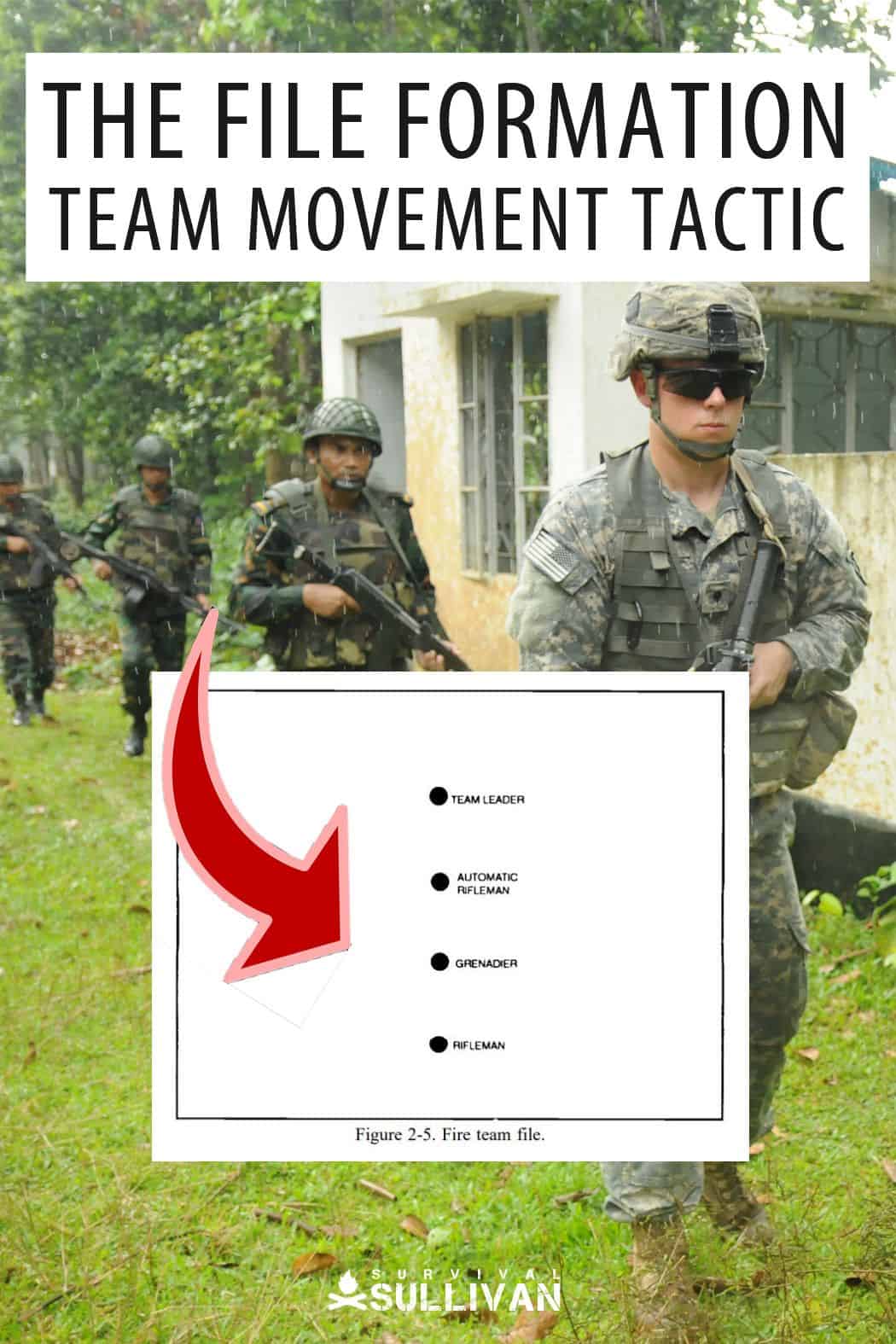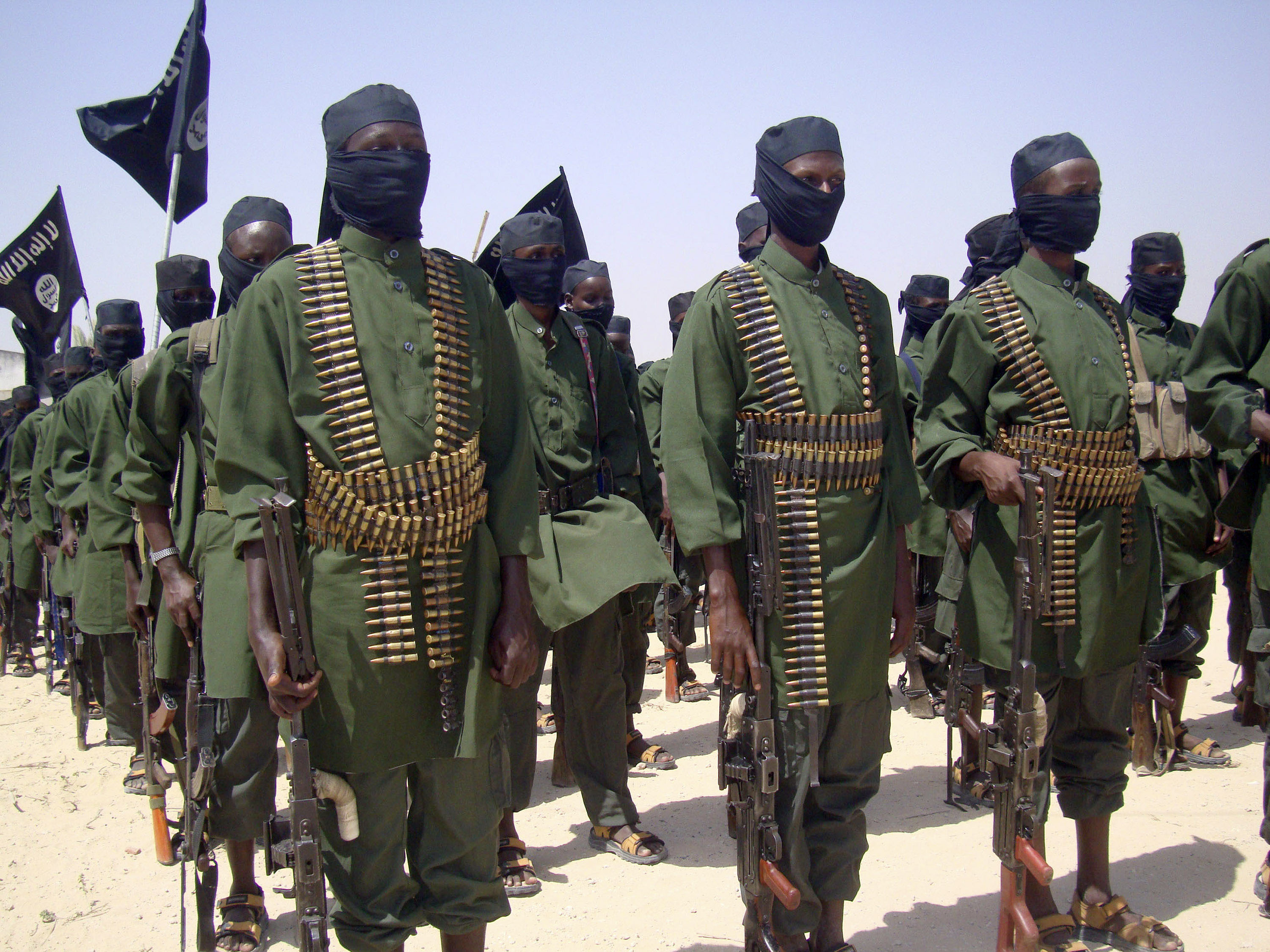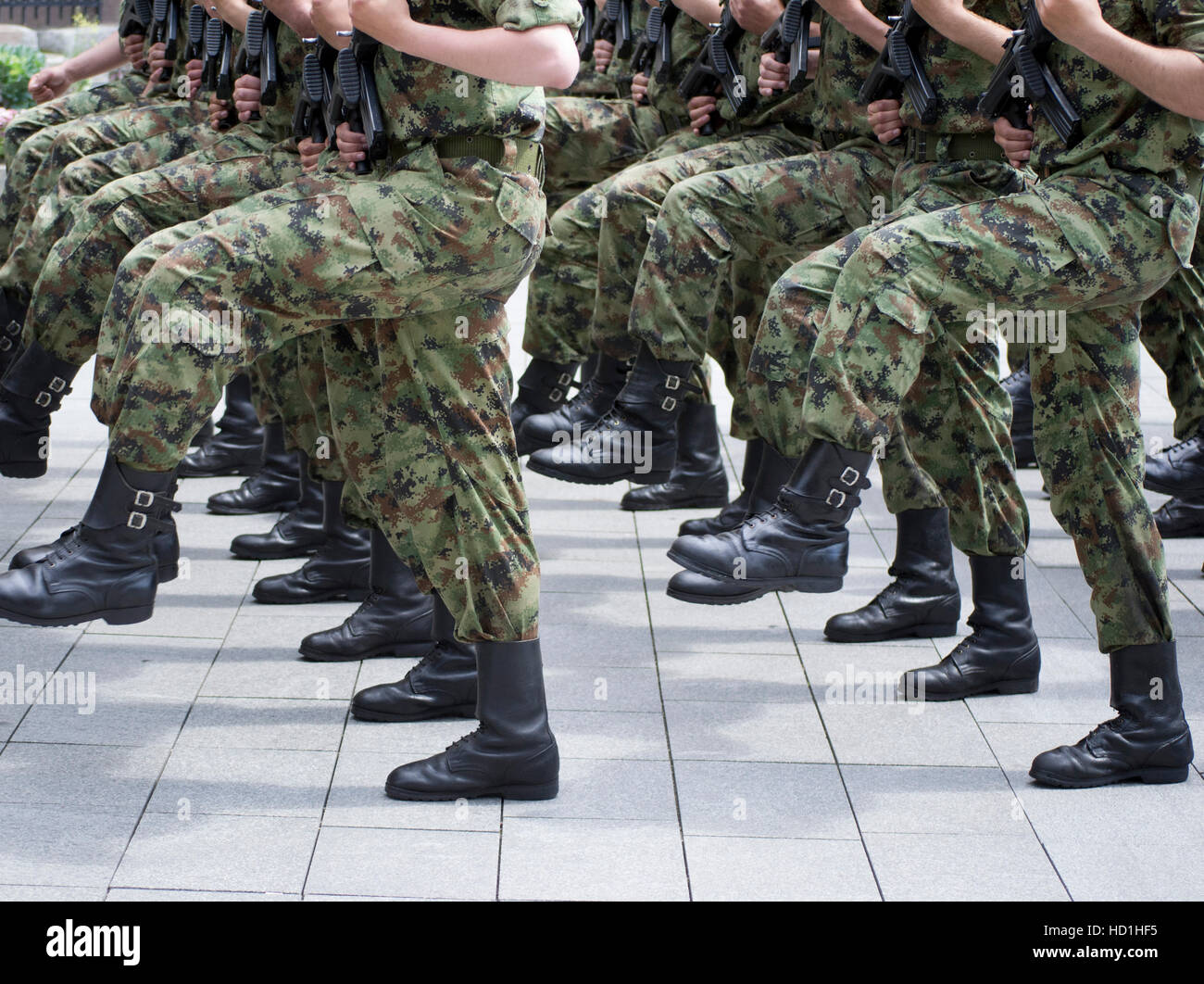Formation Military - b. Crossing large open areas (worn). If the platoon does not have enough time to bypass a large open area, it uses a combination of traveling and restraining overwatch (Figure 3-20). He uses overwatch to travel to save time.
Once the platoon has moved within fire range (within approximately 250 meters) of the squad or platoon where it anticipates possible contact, the platoon uses a boundary observer. After crossing the open field, the squad or platoon reformed and continued the mission.
Formation Military
 Source: www.army.mil
Source: www.army.mil
(3) Group file. When not marching in column or line, detachments march in single file (Figure 3-11). A squad file has the same characteristics as a fireteam file. The squad leader moves to the first or second position if he wants to strengthen the control of the formation, show a great moral presence by leading from the front, and be ready to make quick decisions.
Half Step
To gain more control over the back of the structure, he moved the group leader to the last position. Platoon and BK leaders have several ways to manage platoon formations. They can provide rifle squads with position updates at regular intervals to improve awareness.
As the platoon moves at normal dispersion intervals, the leader uses voice communication and visual contact to direct the movement. The Navy follows somewhat flexible organizational guidelines. Administratively, several ships of the same type (for example, destroyers) are organized into squadrons.
Several squadrons in turn form a flotilla, several of which form a fleet. For operations, however, most navies divide their ships into task units (3–5 ships), task or battle groups (4–10 ships), task forces (2–5 task groups), and fleets (multiple task groups).
f. Bounding Overwatch (detached). If the platoon leader anticipates contact and the terrain prohibits movement on horseback, or if rifle squads are operating separately from vehicles, the platoon (-) will attach deployed rifle squads. (1) Column formation.
Forward March
A platoon uses a column when moving quickly, covering limited terrain along a specific route, or when not expecting enemy contact. Each vehicle usually follows directly behind the vehicle in front. However, if the situation warrants, vehicles may disperse later to improve safety.
This is sometimes called a stepped column. Figure 3-1 shows this type of column movement. Column formation has the following characteristics, advantages, and limitations: The command "Half step, march" is given to any foot that touches the ground.
 Source: www.defenceweb.co.za
Source: www.defenceweb.co.za
On the "march" command, you take another 30-inch step, then take a 15-inch step (measured heel-to-heel) in quick time (double normal walking speed), without scraping the ground and placing your heel first. Make a coordinated arm movement and hold forward or half a step until you stop.
d. Crossing (dropping) a linear danger zone. The platoon crosses the line danger zone in the formation and location designated by the commander (Figure 3-22). When the leading team signals "danger zone" (the entire platoon is given a baton, the platoon halts. The platoon leader moves quickly forward, confirms the danger zone, and determines what equipment the platoon should use to cross. The platoon sergeant (or designated NCO) , if the platoon sergeant BFS
Flying Wedge
(if left) will be transferred to the platoon commander. A musketeer should hope for great success when hitting a rider. cavalry. Noting that the weapons were imprecise, but very deadly, the commanders began to assemble. their men approach each other and fire in the general direction of the enemy. Several shots are guaranteed to land and all go down together. The sudden effect of a volley, or a rapid succession of shots by kneeling the first line and firing the second, has a profound effect on the spirit of the enemy. P is particularly revolutionary,
when you watch movies about the civil or napoleonic wars, see how firing lines work, but they are actually the most effective way to fight. c. Bounding Overwatch (edited). When the platoon leader anticipates enemy contact, he uses a restraining watch (Figure 3-14).
It initiates this based on previously acquired planning information about the enemy's position and the SITREP received during the movement. He connected the elements using alternative limits (Figures 3-15). The Roman commander Crassus would also use the battlefield at Carrhae, but this time he failed because the enemy Parthians had enough arrows to wear down the legionaries from afar.
It seems that the field was sometimes used by Asian troops to repel cavalry attacks. Troop leaders will conduct an adverse weather/dense fog/thunderstorm risk assessment and postpone PT or use off-road routes if visibility restrictions prevent motorists from seeing traffic officers or if lightning could threaten the safety of Soldiers outside.
Right Left Step
d. Travel (abridged). Some platoon missions may require rifle squads to operate independently of the BFV. The trailing rifle squad in the formation can use the marching technique (Figure 3-16). The composition of the element is adjusted according to the situation.
(5) A border element may be required to disembark infantry squads or teams to clear intervening gaps or dead spaces. While this usually forces the element to a tactical halt, it slows down the operation more than losing vehicles and crew to a hidden threat element.
 Source: www.survivalsullivan.com
Source: www.survivalsullivan.com
Active military duty includes members of the United States on active duty, including members of the National Guard and Reserves, as defined in 10 U.S.C. Sections 1209 and 1211. Infantry squares are divided into groups of 500 to 1,000, sometimes more, with flanks at least two men deep.
The corners are reinforced and sometimes overlapped to provide a burning fire, but this is not common. There were sometimes supplies or reinforcements in the field, but interior space was essential, as lines had to be altered to absorb cavalry charges.
Hollow Square
With the adoption of faster firearms, the hollow square became unnecessary. One of its most recent successful uses was with a small detachment of the US Cavalry. 87 captured by 400 Cheyenne cavalry. After making a dugout infantry field and placing their horses in the center, the men fought an eight-mile fighting retreat until the Cheyenne halted and retreated.
Hollow squares can still be used in some situations, such as protecting the wounded during riots or ambushing units. Military equipment means arms, weapons, military equipment and equipment available for military purposes, including, but not limited to, radar systems or military vehicles;
or supplies or services sold or offered, directly or indirectly, to any force actively participating in the armed conflict in Sudan. When moving forward from a stop, the execution command is: "Forward, march." On the "March" command, you step straight forward with your left foot, take a 30-inch step (measured from heel to heel), and place your heel first on the ground.
When walking and marching, you use a coordinated arm swing, meaning right hand forward with left foot and left hand forward with right foot. The arms are held with the thumbs pointing down, and the arms hang straight, but swing naturally, not stiffly.
Interested In Joining The Military?
Swingarms measure nine inches from the front (measured from the back of the hand to the front of the thigh) and six inches from the back (measured from the front of the hand to the back of the thigh).
e. Travel Overwatch (Abridged). Rifle squads usually operate in column or wedge formation (Figure 3-17). Ideally, the lead group moves at least 50 meters ahead of the remaining element. Unit formation can be decisive in battle.
 Source: www.japantimes.co.jp
Source: www.japantimes.co.jp
All things being equal, a commander who knows how to organize and deploy his forces effectively will have a decisive advantage. Throughout history, there have been many formations that have worked well, and some have had many variations that have remained popular with commanders for centuries.
Troop leaders will conduct a bad weather/dense fog/thunderstorm risk assessment and will delay traffic or use off-road routes if visibility restrictions impede patrol officers or motorists who see lightning, endangering the safety of Soldiers. (a) Roll.
Mark Time
The roll (Figure 3-5) is used to provide all-around security and control while the platoon is stationary. It is also useful for tactical refueling, resupply, and issuing platoon orders. Security was provided, including the removal of air patrols and fire brigades.
Transport towers are manned. Armies, navies, and air forces are hierarchically organized into smaller units commanded by lower-ranking officers. Prototype units are army units. The smallest unit in the military is a squad consisting of 7-14 soldiers and commanded by a sergeant.
(A slightly larger unit is a unit of 10 to 40 soldiers, but is usually used only in headquarters or support organizations.) Three or four squads form a platoon of 20 to 50 soldiers and are commanded by a lieutenant.
Two or more platoons form a company of 100 to 250 soldiers and are commanded by a captain or major. The command function is introduced at this level in the form of a staff platoon led by a sergeant and consisting of supply, maintenance, or other departments.
Change Step
(2) Squad line. The squad line (Figure 3-10) provides maximum firepower to the front. When the squad acts as the base squad, the fire team on the right serves as the main fire team. On the command "Right column, march," the fourth element leader (the man in front of the right end line of troops) takes another 30-inch step, turns the left foot 90 degrees to the right of the ball, and swings the hanging arm.
while rotating. After the twist, take a 30-inch step and continue with the matching arm twist. From the second step after the rotation, take a half step. Each subsequent member of the fourth element proceeds to the approximate pivot point set by the person before him and follows the same procedures as the element leader (lead man).

The wedge formation is very old and a very effective formation when used correctly. Historically used with cavalry, the formation involved a group of troops attacking the enemy with a triangular wedge. The next attack penetrates the enemy's ranks, usually infantry, and scatters the opposing forces.
When charging thin lines, the wedge can completely split the line into two groups, split the force, and easily defeat them. a. Composition of the firefighting team. The term "fire team formation" refers to the relative position of soldiers within a fire team (Table 3-1).
Right Left Flank
Each type of molding has advantages and disadvantages. The leader compared this to his analysis of METT-TC: During the Napoleonic Wars, the hollow field became a flexible formation. Soldiers almost always formed an infantry square in response to cavalry charges.
During the Napoleonic Wars, cavalry could be very lethal, armed with rifles as well as lances and swords, and with the speed to close formation quickly. (2) Contouring of open areas. Using movement azimuth, the leader establishes an assembly point on the far side, decides which side of the open area to contour (after considering distance, terrain, and cover and concealment), and moves around the open area.
Uses tree line and vegetation for cover and concealment. When the squad or platoon arrives at the assembly point on the other side, the leader aligns in azimuth to the objective area and then continues the mission.
Military installation means: a base, camp, post, station, yard, center, home port for any ship, or other activity under the jurisdiction of the Department of Defense, including any leased facility located in any of the several states.
Phalanx/Firing Line
Colombia, Commonwealth of Puerto Rico, US Virgin Islands, Guam, American Samoa, Northern Mariana Islands and any other US territory. The term does not include any facility intended primarily for civil engineering, river and harbor projects, or flood control projects.
Alexander the Great personally led his cavalry with a flying wedge, which greatly influenced many battles, especially his brilliant victory at Gaugamela. Also, the wedge can be used in multiple unit structures. An army in a hollow wedge with a fortified center would occupy the enemy's center while covering and protecting weak flanks, perhaps winning the battle in less than half their strength.
 Source: c8.alamy.com
Source: c8.alamy.com
a. Terrain. When planning operations, the leader must consider how the terrain affects security. The company commander should obtain a copy of the AO's modified combined obstacle layer (MCO) from the battalion task force. The platoon leader may request a copy of the MCO for the AB from the company group commander.
Once he has it, he uses it and the commander's terrain analysis results to analyze the terrain to find the best covered and stealthy route for his mission. At the same time, he considered other reasons for METT-TC.
To The Rear March
The third element leader (the person to the left of the fourth element leader) takes a 30-inch step (while maintaining a coordinated arm swing), turns 45 degrees to the right on the ball of the left foot, and takes two 30-inch steps before turning 45 degrees to the right on the ball of the left foot.
Continue walking in 30-inch increments to the fourth element leader. Then start with a half step and set the spacing and alignment. Each successive member of the third element proceeds to the approximate turning point designated by the person in front of them and follows the same procedures as the element leader.
The Payroll Tax Order issued on August 8, 2020, and containing any administrative or other guidance published in any government agency related thereto (including IRS Notice 2020 -65), deferring payroll tax obligations due to the ongoing COVID-19 disaster President
means memorandum. ). (3) METT-TC factors determine the length of boundaries. However, the engagement element should not exceed the distance (2/3 of the effective range of the weapon system) at which the base element of fire can effectively intercept known, probable, or suspected enemy positions.
Taking this precaution will reduce the engagement element's exposure to enemy fire.
military formations pdf, military formation diagram, military formations by size, stack military formation, army formations, army formations manual, movement formations and techniques army, military formation crossword clue